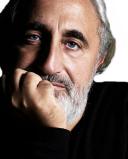Placebo
Does the Q-Ray Bracelet Really Work?
The Q-Ray Bracelet and the Placebo Effect.
Posted November 24, 2009

The scientific method is the mortal enemy of quackery. It is a democratic process whereby all claims can be rigorously tested and in so doing either establish their veracity or refute them as bunk. Within the consumer domain, there are endless product claims that are wholly unsubstantiated by any scientific testing, and yet consumers are willing to spend billions of dollars on empty promises. One of the most telling examples of this phenomenon is the Q-Ray bracelet. Its purported benefits are endless (e.g., reduce debilitating pain), and are purported to be due to the ability of the Q-Ray bracelet to balance one's yin and yang.
Robert L. Bratton and his colleagues, which included several physicians and a biostatistician, several of whom worked at the world-famous Mayo Clinic, decided to put one of the Q-Ray bracelet's claims namely its ability to reduce pain through the scientific lens. Six hundred and ten participants took part in the experiment (randomized and double-blind), half of which wore a Q-Ray bracelet and the other half a placebo bracelet. Pain measures were elicited from participants at the start of the experiment and again after having worn the bracelet for 1, 3, 7, 14, 21, and 28 days. What do you think happened? Both groups showed a decrease in the subjective pain that they were experiencing however the difference between the two groups was insignificant. In other words, the effect of the Q-Ray bracelet was equivalent to the standard placebo effect.
Of course, those who staunchly believe in the Q-Ray bracelet's magical powers come up with endless justifications for the null effect. The study was too short in duration. The bracelet is only effective on those who believe in its powers (as negative energy interferes with the electromagnetic fields generated by the Q-Ray bracelet). The experimental setting interferes with the energy flows. The irrational quackery is endless. Of course, there is always the vivid personal anecdote that is meant to offset objective and rigorous scientific testing: "I don't care what those idiots from the Mayo Clinic found. I have been wearing the Q-Ray bracelet for six weeks and I can tell you that my golf game has improved, my refractory period has shrunk to ten minutes [no pun intended], and I no longer wear glasses. I haven't felt this good in twenty years."
Most people would not take a drug that was found to be ineffective in treating an ailment. Yet when it comes to alternative therapies, rational thought and the scientific method no longer apply. Belief void of reason can be a costly decisional trap.
On a separate note, I'd like to wish my American readers a happy thanksgiving holiday (in Canada the holiday is celebrated much earlier in October).
Ciao for now.
Addendum (November 2, 2014): Listen to THE SAAD TRUTH_14 for my chat on The Brent Loucks Show wherein we discuss the reasons that people believe foolish hype, as peddled by proponents of the Q-Ray bracelet.
Source for Image:
http://www.qray.ca/QrayCart/Product.aspx?PromoID=ProdInfo&sku=2414


